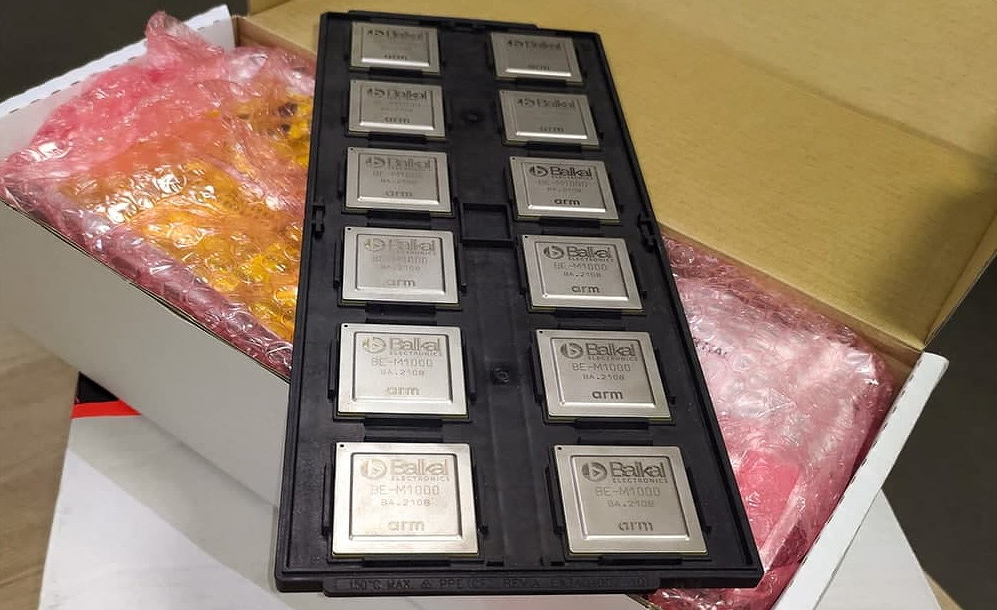Russia Gets First Batch of Arm-Based Homegrown SoCs: All 66 Kgs of Them
Baikal Electronics, a chip designer from Russia, has received the first commercial batch of its Baikal-M system-on-chips from manufacturing partner TSMC. The SoCs will enable Baikal's partners like iRU to start production of 'all-Russian' PCs, yet the volumes of chips that Baikal can procure from TSMC will hardly let such computers to compete against x86-based systems in terms of volumes.
Baikal Electronics this week got 5,000 Baikal-M (BE-M1000) SoCs from TSMC, reports CNews. The 'package' weighs 66 kilograms (which means 13.2 grams per SoC), according to the company, a novel method to quantify semiconductors. Due to global chip shortage and high utilization rate of TSMC, the shipment was delayed by about four months. Meanwhile, the company expects to start getting 10,000 – 15,000 SoCs per months starting early next year.
"We expect the entire supply chain to start operating at full capacity — at 10 – 15 thousand chips per month — starting from January-February," said Andrey Evdokimov, chief executive of Baikal Electronics, in an interview with CNews. Establishing mass production is a complex task, and we have invested massively in it in order to ensure the stability of supplies and to minimize risks at all stages of production."
The head of Baikal Electronics refused to reveal which companies would get the Baikal-M SoCs first, but at least one Russian PC maker announced mass production of computers powered by the SoCs back in August. The company advertised the systems as 'all-Russian' computers that use hardware and software designed in Russia. But the memory, SSDs, HDDs, and other components were neither designed nor produced in Russia.

10,000 – 15,000 of Baikal-M SoCs per month does not seem to be a significant number. Yet, one should keep in mind that these processors will power some of the entry-level systems used by the government as well as state-owned companies and organizations for general workloads that do not need high performance.
By today's standards, the Baikal-M1 is not exactly a performance powerhouse. The SoC packs eight fairly outdated Arm Cortex-A57 cores (first appeared in commercial products in 2015) operating at 1.50 GHz and outfitted with an 8MB L3 cache. The SoC also features an eight-cluster Arm Mali-T628 GPU with two display pipelines, a dual-channel DDR3/DDR4 controller, and supports six USB 2.0/3.0 ports (four USB 2.0, two USB 3.0), 16 PCIe 3.0 lanes (x8, x4, x4), two GbE ports as well as two 10GbE ports.
Despite its rather mediocre configuration and feature set, the 28-nm Baikal-M has an up to 35W TDP, which is okay for mainstream desktops and entry-level laptops, but which excludes these SoCs from various sleek PC designs and various small form-factor edge applications.
Get Tom's Hardware's best news and in-depth reviews, straight to your inbox.

Anton Shilov is a contributing writer at Tom’s Hardware. Over the past couple of decades, he has covered everything from CPUs and GPUs to supercomputers and from modern process technologies and latest fab tools to high-tech industry trends.